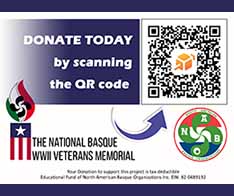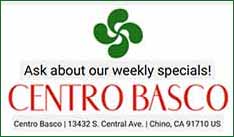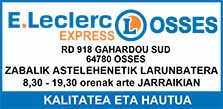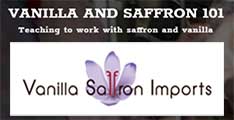Craig Tansley. In Elko, cowboys congregate in January for the National Cowboy Poetry Gathering, as they've done each year since 1985. Just west, in Winnemucca, there are more descendants of Basque sheep herders and cowboys (they call them buckaroos in these parts) per head of population than any other town outside Europe's Basque region.
Not far from Elko and Winnemucca - in a tiny hamlet called Currie - was the last rumoured sighting of the wildest cowboy of all, Billy the Kid, killer of 21 men. The word around here is he escaped the hangman's noose and lived to a ripe old age as a rancher in these lonely mountains of northern Nevada. "Fairly certain of it, son," an ancient rancher called Elvin in a 10-gallon hat tells me as I fuel up beside him in a highway town called Battle Mountain. "This is proper cowboy country out here."
Most travellers - if they come here at all - speed across this part of Nevada on their way to someplace else. But Interstate 1-80, which runs across the top of the state, is more than just a highway. Slow down, locals advise, since few places in America offer a window like this into the country's western origins.
But there's more than that here, because this 650-kilometre trail - dubbed the Cowboy Corridor - between Reno and West Wendover, on the border with Utah, is where Basque culture overlaps with cowboy culture like nowhere else on Earth. In the 1840s, immigrants from the Basque region of northern Spain and southern France came seeking their fortune during the Californian gold rush. They soon realised their sheep-herding skills were more valuable, so they came east out here to Nevada's open ranges. They could make their own fortunes selling meat to hungry miners.
Nearly two centuries on, their descendants remain in towns along the highway, commemorating their culture in Basque-style restaurants, a welcome anomaly to the proliferation of Wendy's, McDonalds and Burger Kings along most American roadways.
Day 1 to 3: Reno to Winnemucca
Last time I was in Reno, the Village People were playing at an inner-city casino. Fourteen years later, they're back - or maybe they never left? Once regarded as a poor man's Las Vegas, this time around I notice Reno's new indie edge. It has a hip art district now: dozens of independently owned galleries, boutiques and restaurants along the river which cuts through town. There are vintage shops and cocktail bars where the dive bars used to be. I'm staying in a swanky new hotel called the Jesse Hotel where locals who look like southern Californian transplants gather at the bar downstairs.
But it's Louis' Basque Corner across the road which beguiles. Expecting a quiet meal on my own, I'm placed without warning among a group of diners at a big table. "This is how the Basque eat," my waitress tells me. Carafes of wine appear, and soup, and salad, and hand-cut fries, and sweet breads, and lamb chops, and sirloin. Basque sheep herders once stayed around these parts in boarding houses when they weren't out herding - this is how they ate.
No-one's ordered anything, but food is delivered in ever-growing proportions. The conversation flows with the wine and a bitter orange tasting drink called picon punch. Every few minutes the roar of conversation dips as we sing another rendition of Happy Birthday to a table across the room. And then there's Antton and Nerea celebrating their 45th wedding anniversary: Topa! And Xabier celebrating his college graduation: Topa! By the time I make it out, I have many friends for life I will never, ever see again.
My escape along Interstate I-80 beckons early next morning. There are no vast distances to cover on the Cowboy Corridor, but I'm eager for wide open spaces. It takes only a few minutes' driving and the city gives way to open plains where calico-coloured grass grows all the way to snow-capped mountains. I take a turn-off for a former boom mining town called Unionville, and the road turns back on itself, before the bitumen ends entirely.
Nevada has more ghost towns than any other American state and Unionville may be the most famous of them; on account of the fact Samuel Langhorne Clemens (aka Mark Twain) lived here for a time. There's an ambiguous sign for Unionville aimed down a narrow, dusty gravel road. I don't pass a single car on it - till I reach an RV camped by the side of the roadway. "Hell of a holiday spot, isn't it?" its occupant asks me rhetorically when I stop to check I'm on the right road. I look around and can see forever across a clear, high desert plain ringed by mountains. Yep, hell of a holiday spot.
Unionville is an oasis in the desert: I drive in past historic homes on a road built into the foothills fringed by green gardens where ducks paddle in ponds. Twain's hut is here, near the road's end; not that he lasted long. "All that glitters is not gold," he wrote. One of Nevada's oldest towns, less than 20 people live here now, among them a mother-son team who run the iconic Old Pioneer Garden Country Inn within a restored 1860s-era home.
But I keep moving. Further east I pull into another living ghost town where cottonwoods hang over historic homes and buildings beside a snow-fed creek, in the foothills of the Santa Rosa Mountains. This is Paradise Valley, one of the state's most picturesque places, full of abandoned adobe brick buildings from the 1860s, and granite churches crafted by Italian and Basque stonemasons.
I stop for lunch at the town's only saloon, amongst locals keen to boast about their town. I hear tales of police shoot-outs with one of America's most wanted murderers (in 1986), but mostly conversation is about the ghosts who linger in this valley. "Come back after dark and see the Micca Hotel," one of them advises (deserted now, the hotel's on the National Register of Historic Places). "It's one of America's most haunted places." (I fact-check this later: it is, allegedly).
But I'm due in Winnemucca, 40 kilometres south, with its highest concentration of Basque-style restaurants per capita in the US. It looks like any American cowboy town as I drive through; there's even a bank Butch Cassidy was rumored to have robbed in 1900. But Winnemucca is where the fusion of Basque and American culture is most prominent. Winnemucca holds a Basque festival every June and the Martin Hotel is one of America's most iconic Basque eateries. First built in 1898, it's been serving family-style meals in its restaurant for 80 years.
I try its specialty bread pudding, the black angus rib, soup and beans with a table of local families, marveling at how these cowboy types all have surnames like Perez. "We also eat burgers at Wendy's," the patriarch tells me.
Day 3 to 5: Winnemucca to West Wendover
I'm soon back on the I-80. I pull into Elko, where Bing Crosby was honorary mayor after living here for 14 years. Before Las Vegas, Elko was where the big name bands came in Nevada. It's a cowboy town all right - True West magazine rates it one of America's top 10 western towns - but I also find a town of hip outdoor murals and trendy bars, and the best lattes this side of Seattle (at a cafe called Cowboy Joe).
It's also where cowboy poets gather to share poems at the National Cowboy Poetry Gathering. Elko's Star Hotel, built in 1910 by a Basque immigrant, is where cowboy culture and Basque traditions juxtapose most succinctly. I pass historic brothels on the street advertising "dancing and diddling", then stroll through a bar of old cowboys sitting side-by-side below walls with bison and bobcat heads to find a seat at one of America's oldest Basque-style restaurants.
I'd stay in town, but I'm headed south, to a secret part of the state people call the Yosemite of Nevada. Barely 30 minutes south of Elko, the Ruby Mountains rise over 3500 metres, every bit as glorious as the Rockies. I drive through tiny Lamoille where mule deer amble across the road, stalling my progress. I stop at a historic tavern as an early season snow storm strikes. Two blue heelers look none too pleased, tied in the tray of an old Can-Am ATV Defender.
Locals look up when I enter. When I tell one of them I'm Australian, he asks if I'm here for the mines (Nevada is the world's fourth largest producer of gold). "Never heard of one of you here for a vacation," he says, when I answer in the negative. Beyond Lamoille, the road turns to dirt and winds its way into the mountains. I'm staying in a yurt in the middle of the wilderness, beside a babbling stream. I'm off-the-grid here, with a propane stove and solar-powered energy and an electric fire which runs off a car battery. I drive further up the mountain to family-owned Ruby Lodge, where a chef prepares a four-course meal overlooking the valley below. Come January, the lodge doubles as a heli-ski operation.
In the morning, I drive to the Lamoille Scenic Byway, a 20-kilometre slow drive through a glacier-carved canyon that takes me into the heart of the highest Ruby mountains. It's covered in light snow as I navigate my way below avalanche chutes, stopping for mule deer and a big-horned sheep, and to hike a trail which takes me deep into the Rubys.
There are more secrets out here along this Cowboy Corridor. I find a lake - Angel Lake - among a glacial cirque at 2800 metres where I drive a lonely roadway offering a staggering view of Utah's Rockies. I find salt flats where history's craziest daredevils set land speed records (Bonneville Salt Flats). And I explore quirky little cowboy towns scarcely on the map.
Out here on this Cowboy Corridor, among these wide open, empty spaces of nothingness, the aphorism that's it's not about the destination, it's about the journey, has never felt more true. I'm sated by the perpetual motion of this road trip in a place which feels like the antithesis of tourist-choked American road journeys, like California's Highway One, with its assembly line of Aussies in rented red convertibles.
Out here I could well be the only tourist east of Reno - certainly the only Australian - and boy, do I like that.
The writer travelled courtesy of Travel Nevada



 Lagun bati bidali
Lagun bati bidali Komentarioa gehitu
Komentarioa gehitu








